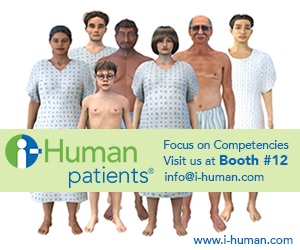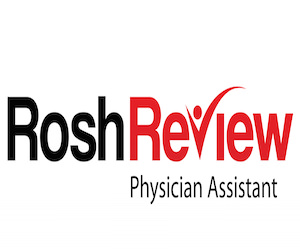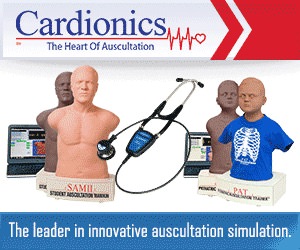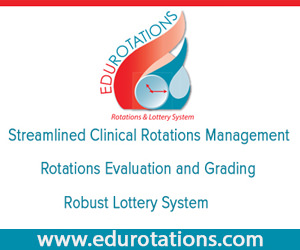Board Candidates

Danielle Kempton, DHSc, MMS, PA-C
Director at Large Platform Statement
I am excited to declare myself as a candidate for a Director at Large position on the PAEA Board of Directors. Since beginning my career in academia seven years ago, I have had the opportunity to grow as an educator and leader, and have sought positions and opportunities that continually challenge me to think creatively, analyze critically, and to work hard for change. My perspective on this organization, our work, and the state of our profession (both clinical and academic) is a result not only of my clinical practice, but the experience I have gained as the director of the clinical curriculum, director of didactic education, my work on developing new programs, and the volunteer positions I have held with this organization. I have had the opportunity to serve with and learn from some of the finest in our field for several years facilitating and directing the Basic Clinical Coordinator’s Pando Workshop (now Clinical Coordinators 101) and as a four-year member of the Conference Council. These roles have given me a holistic appreciation for the work of PAEA and the gravity of the challenges we face.
My goals as a Director at Large are to leverage my professional strengths and a passion for innovation, collaboration and the work of our organization to ensure that we, as PA educators and PAs, have a seat at the table as we work to navigate the rapidly evolving and often uncertain changes in healthcare delivery, medical education, and health policy. I believe that it is more critical than ever that we work in collaboration with our colleagues and other stakeholders to ensure that we are creative and innovative in our thinking about PA training. The decisions we make at both the national organization and programmatic levels must reflect the needs of students, and the realities of the evolving role of the PA in the healthcare system. We must continue to be innovative in our work to create a pipeline of PA educators, and support programs through offering accessible, high-quality professional development opportunities. And finally, I firmly believe that we cannot solve the clinical training site shortage unless we focus on lobbying for increased and sustained federal funding for traditional and innovative clinical training opportunities.
It is my sincere hope that I will have the opportunity to put my shoulder to the wheel as a Director at Large.
Responses to Association Questions
- What characterizes a high-performing Board member and which of those attributes do you posses that would provide strong contributions to the PAEA board?
High performing board members are passionate about our profession. They bring to the table a range of professional experiences which allow them to offer both insider knowledge and outsider perspective on the challenges we face as clinicians and faculty, as individual programs, and as an organization. These leaders listen, communicate, and work collaboratively to move the work of the organization forward. They are hard-working, flexible and willing to be uncomfortable, yet open minded, when challenging the status quo.
By nature, those of us who sought the PA profession are collaborators, and I’m no exception. I thrive in an environment that allows me to work with a diverse group of team members, as committed to this profession and this organization as I am, in an environment that challenges me and supports growth and innovation. I believe that I lead and communicate with skill and diplomacy, and am willing to work hard for what I believe in.
My experience spans a variety of roles in PA education, from directing the clinical year to directing the didactic year, and from that of new educator and mentee to that of experienced educator and mentor. I have helped build and design new programs and revamp established programs. I believe the perspective I have as a result of this varied experience, and the communication, project management, and leadership skills I have gained, will enable me to make valuable contributions to the board. I look forward to leveraging these skills in service to the membership of PAEA.
- If PAEA’s entire budget was represented by $100, what amount of money would you invest in products & services that benefit individual programs (e.g., exams, workshops), and what amount would you invest in initiatives that benefit the field as a whole (e.g., advocacy, legislation)? Please provide rationale for your response.
At the risk of sounding noncommittal, I propose that the funds should be divided equally.
With the health care reform on the table and tuition at an all-time high, both healthcare and education sit at critical junctures. I see PA education as the bridge that spans these two realms, educating future clinicians to treat patients and to innovate and improve healthcare delivery. Because we have a stake in both of these endeavors, we must remember that, from an advocacy and policy development standpoint, what benefits the profession as a whole is what benefits individual programs. As an organization we must continue to advocate and educate, ensuring that policy informers understand that improving health outcomes begins with supporting the education of physician assistants through tuition assistance, incentives for clinical training sites and investment in alternative education delivery models.
The organization must also continue to support the development and delivery of products and services that meet the evolving needs of the membership. PAEA provides an invaluable service to a membership made up of educators who, by and large, have learned about education “on the job”, and rely on colleagues, mentors and PAEA to support their transition from clinician to teacher. In addition, PAEA acts as a repository of our collective knowledge, and provides us a forum in which to share with others best practices and innovative approaches to the challenges that we have in common. As an organization we must continue to meet this most fundamental need.
- What are some of the most important unanswered questions relating to the clinical rotation site shortage that the Board needs to address?
- How can the organization leverage its relationships to bring legislative attention to the clinical training shortage, and advocate for the development of federal policy that requires organizations receiving federal healthcare dollars to provide clinical training opportunities?
- How can PAEA work to ensure that healthcare administrators understand the value of clinical training in terms that are meaningful to them; specifically, revenue and outcomes?
- Similarly, what services can PAEA provide to educate the membership about the business of healthcare, empowering programs to negotiate clinical training relationships directly with health systems administrators?
- What are the three most important emerging trends in health care and health care education that will affect PA education in the coming decade?
- Quality Improvement: The rapidly changing and uncertain healthcare environment requires our curricula reflect the most recent data related to healthcare access, patient safety, care coordination and outcomes, and how these quality measures are used to evaluate systems and key processes.
- Clinical Education: The shortage of clinical sites will continue to challenge healthcare education. We must be innovative in our approach to clinical training, recognizing the value of simulation and non-traditional training models. As we approach a new iteration of our accreditation standards it is important that we advocate for flexibility in our clinical training requirements, recognizing that the way we’ve always done it isn’t necessarily the best way to do it.
- Integrating behavioral health and medical care: Efforts to redesign delivery models and integrate behavioral health into primary care have been undertaken to both address the need for more providers and improve patient outcomes. PA programs must continue to emphasize the impact of mental health on physical health, and provide students sufficient training in psychiatry and behavioral health to prepare them to practice holistically in an integrated-care model.










